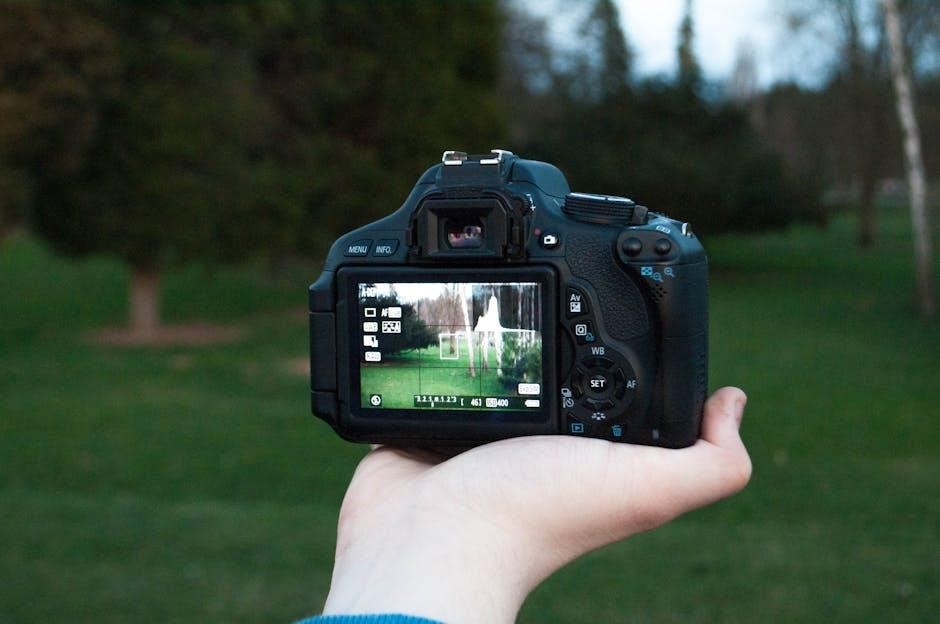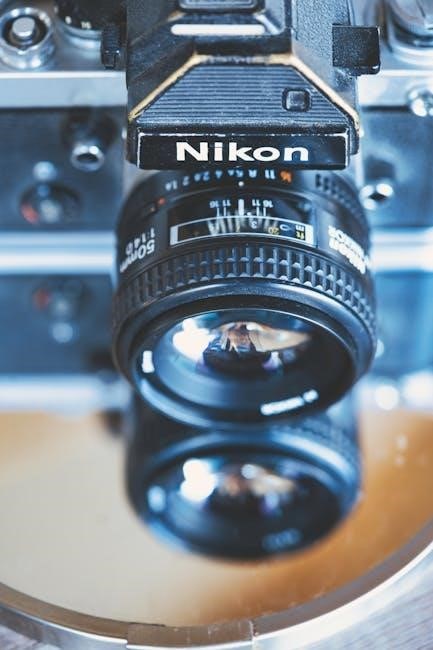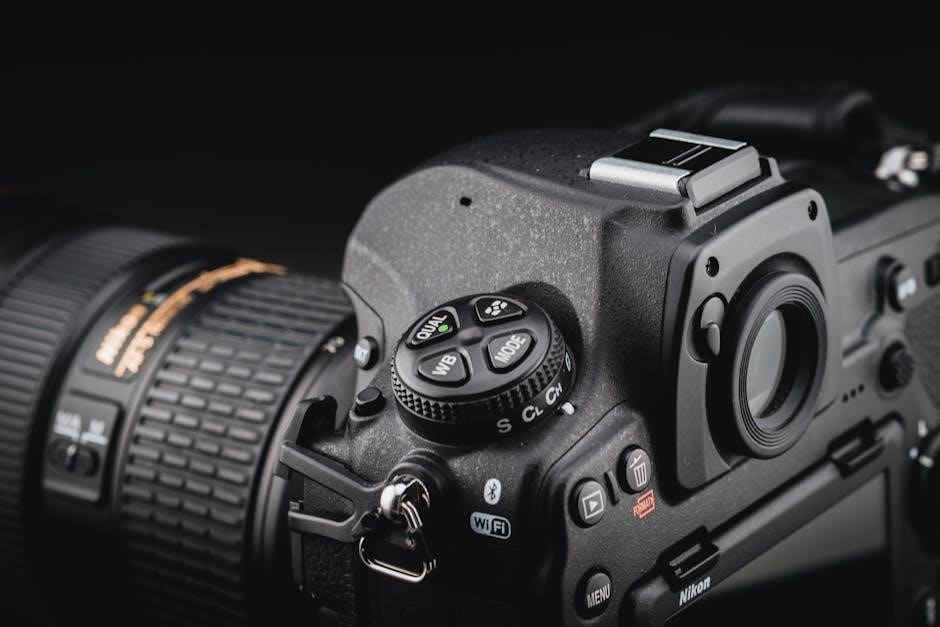Santa Barbara TV Guide: Comprehensive Listings & Information (November 28, 2025)
Welcome to your complete Santa Barbara television resource! Discover detailed listings for local channels, cable, satellite, and streaming options as of today, November 28, 2025.
Find schedules, news, sports, and entertainment programming, including coverage of community events and press releases, all conveniently accessible through various platforms.
Santa Barbara’s television landscape offers a diverse range of viewing options, blending traditional broadcast with modern streaming services. Local channels like KEYT NewsChannel 3, Telemundo Santa Barbara, and CW Santa Barbara provide essential news, entertainment, and community programming.
Beyond these, Santa Barbara City TV serves as a vital platform for local government and community events. Residents can access programming through over-the-air antennas, cable providers, and satellite services like FuboTV. The rise of online TV listing websites and apps further simplifies schedule navigation.
This guide aims to be your comprehensive resource, detailing how to find what’s on TV tonight in Santa Barbara, covering everything from daily schedules to interactive listings and community-focused broadcasts. Stay informed and entertained with the best of Santa Barbara television!
Understanding Local Channels
Santa Barbara’s local channels are cornerstones of community information and entertainment. KEYT NewsChannel 3 delivers crucial local news and weather coverage, while Telemundo Santa Barbara provides Spanish-language programming and news. CW Santa Barbara focuses on entertainment, offering a mix of shows and syndicated content.
Don’t overlook Santa Barbara City TV, a dedicated local access channel showcasing city council meetings, community events, and public service announcements. These channels are accessible via over-the-air antennas, and through various cable and satellite providers.
Understanding each channel’s focus allows viewers to quickly find relevant content. Regularly checking listings on Independent.com and KEYT’s website ensures you’re up-to-date on local broadcasts and community programming schedules.

Accessing Santa Barbara TV Listings
Explore numerous ways to find Santa Barbara TV schedules! Utilize over-the-air, cable, satellite, and online resources like fubo and Independent.com for comprehensive listings.
Over-the-Air TV Listings
For Santa Barbara residents seeking free television access, over-the-air (OTA) broadcasts offer a viable solution. Utilizing an HD antenna, viewers can receive signals from local channels without monthly subscription fees. Current information indicates availability of schedules from antenna providers specifically for the 93103 zip code.
These listings typically include KEYT NewsChannel 3, Telemundo Santa Barbara, and CW Santa Barbara, providing access to local news, entertainment, and sports programming. Signal strength varies depending on location and antenna quality, so experimentation with placement is often necessary.
Checking online resources that compile OTA channel lineups for Santa Barbara is recommended to confirm available channels and program schedules. This method provides a cost-effective way to stay informed and entertained with local content.
Cable TV Listings in Santa Barbara
Cable television remains a popular choice for Santa Barbara viewers seeking a wide range of channels and reliable service. While specific channel lineups vary depending on the provider, common offerings include local channels like KEYT, Telemundo, and CW, alongside national networks and specialty programming.
Accessing cable TV listings typically involves utilizing the provider’s on-screen guide, website, or mobile app. These resources allow viewers to browse schedules by channel, time, or program title. Interactive program guides often feature descriptions, ratings, and parental control options.
Cable providers in the Santa Barbara area frequently offer bundled packages including internet and phone service. Comparing plans and pricing is crucial to finding the best value for individual viewing needs and preferences.
Satellite TV Listings for Santa Barbara Residents
Satellite television provides an alternative to cable, offering extensive channel selections and coverage throughout the Santa Barbara region. Providers deliver programming via satellite dish, enabling access to numerous networks, including local affiliates like KEYT NewsChannel 3, and a diverse array of entertainment and sports channels.
Satellite TV listings are generally accessible through on-screen guides, provider websites, and dedicated mobile applications. These platforms allow users to search schedules by channel, program, or time slot, often including detailed descriptions and parental controls.
Consider factors like weather interference and installation requirements when choosing satellite TV. Comparing packages and promotional offers from different providers is essential for Santa Barbara residents.
Online TV Listing Websites & Apps
Numerous online resources simplify accessing Santa Barbara TV schedules, offering convenience and customization. Websites and mobile applications aggregate listings from various providers – over-the-air, cable, and satellite – presenting a unified view of available programming.
These platforms often feature search functionalities, allowing users to pinpoint specific shows, channels, or genres; Interactive features, such as personalized recommendations and show reminders, enhance the viewing experience. Many services also integrate streaming options, providing direct access to on-demand content.
Popular options include dedicated TV listing sites and apps from individual providers. Utilizing these digital tools ensures Santa Barbara viewers stay informed about their favorite programs.
Key Local Channels & Programming
Santa Barbara’s television landscape features KEYT NewsChannel 3, Telemundo Santa Barbara, and The CW. Local access channel, Santa Barbara City TV, also provides community programming.
KEYT NewsChannel 3
KEYT NewsChannel 3 is a cornerstone of Santa Barbara television, delivering comprehensive local news, weather, and sports coverage to the community. As a trusted source, KEYT provides up-to-the-minute reports on critical events, local government, and community happenings.
Their broadcast schedule includes regularly updated news segments throughout the day, alongside in-depth investigative journalism. Viewers can also access KEYT’s content through their website and various social media platforms, ensuring constant connectivity to local information.
Beyond news, KEYT offers a range of programming, including community-focused segments and special event coverage. The station actively engages with the Santa Barbara area, fostering a strong connection with its viewers and serving as a vital resource for local residents.
Telemundo Santa Barbara
Telemundo Santa Barbara serves the Spanish-speaking community with a dedicated focus on local news, entertainment, and cultural programming. As part of the KEYT network, Telemundo provides vital information tailored to the Hispanic population of Santa Barbara and surrounding areas.
Their broadcasts feature local news stories, weather updates, and community events, all presented in Spanish. Telemundo also offers a variety of entertainment programs, including popular telenovelas, reality shows, and sports coverage.
The station’s commitment extends beyond television, with a strong online presence and active engagement on social media platforms; Telemundo Santa Barbara strives to be a trusted source of information and a vibrant voice for the local Hispanic community.
CW Santa Barbara
CW Santa Barbara, also part of the KEYT network, delivers a diverse programming lineup appealing to a younger demographic. The station broadcasts a mix of primetime shows, including popular series, reality television, and syndicated content. Viewers can expect a schedule filled with entertainment options distinct from traditional network programming.
CW Santa Barbara often features programming geared towards teens and young adults, alongside acquired series and specials. While local news coverage is primarily handled by KEYT NewsChannel 3, the CW station contributes to the overall content offering within the Santa Barbara television market.
Check local listings for specific showtimes and program details, as the CW schedule can vary.
Local Access Channel – Santa Barbara City TV
Santa Barbara City TV serves as a vital community resource, offering a platform for local voices and perspectives. This channel is dedicated to showcasing city government meetings, public affairs programming, and events relevant to Santa Barbara residents. Viewers can stay informed about local issues, city council decisions, and community initiatives.
The channel also features programming created by and for the community, including shows produced by local organizations and residents. An interactive programming schedule is available online, allowing viewers to explore upcoming events and content.
Santa Barbara City TV fosters civic engagement and provides a unique window into the heart of the city.

Specific Programming Categories
Santa Barbara television offers diverse content, including local news, captivating arts and entertainment shows, and exciting sports broadcasts for all viewers to enjoy.
Local News & Weather Coverage
Santa Barbara residents rely on local channels for up-to-the-minute news and accurate weather forecasts. KEYT NewsChannel 3 is a primary source, delivering comprehensive coverage of Santa Barbara County events, investigations, and community stories.
Telemundo Santa Barbara provides news in Spanish, serving a significant portion of the local population. Viewers can expect detailed reports on local government, public safety, and breaking news situations.
Beyond breaking news, these stations offer in-depth weather reporting, crucial for a region prone to diverse conditions; Expect hourly forecasts, severe weather alerts, and specialized reports on topics like wildfires and coastal conditions. Stay informed with reliable, local journalism!
Arts & Entertainment Programming
Santa Barbara’s vibrant arts scene finds a voice on local television. While dedicated arts channels are limited, KEYT and Telemundo Santa Barbara frequently feature segments on local events, artist spotlights, and cultural festivals. Expect coverage of performances at the Granada Theatre and the Santa Barbara Bowl.
The CW Santa Barbara often broadcasts entertainment-focused programming, including syndicated shows and potentially locally produced content highlighting the region’s creative community. Santa Barbara City TV, the local access channel, is a key platform for showcasing independent films, community theatre productions, and artistic endeavors.
Check listings for press releases and community programming announcements to discover hidden gems!
Sports Broadcasts in Santa Barbara
Sports fans in Santa Barbara have several options for catching their favorite games. KEYT NewsChannel 3 typically broadcasts major national sports events, including professional football, basketball, and baseball, depending on network affiliations. Local high school sports coverage, particularly football and basketball, is often featured on KEYT and potentially on Santa Barbara City TV.
While dedicated sports channels aren’t prominently listed, streaming services like FuboTV (available in the Santa Barbara/Santa Maria area) offer comprehensive sports packages. Check listings for specific game times and channel availability. Telemundo Santa Barbara may occasionally broadcast soccer or other international sporting events.
Stay tuned for local event listings that may include sports tournaments!

Navigating TV Schedules

Accessing Santa Barbara TV schedules is easy! Explore daily and weekly listings online via provider websites, interactive TV guides, and dedicated TV listing platforms.
Daily TV Schedules
Staying up-to-date with what’s on today in Santa Barbara is straightforward. Numerous resources provide comprehensive daily TV schedules for November 28, 2025. Key local channels like KEYT NewsChannel 3, Telemundo Santa Barbara, and CW Santa Barbara publish their daily programming online.
These schedules typically detail show times, descriptions, and channel information. Additionally, websites dedicated to TV listings aggregate schedules from various providers, including cable and satellite options like FuboTV. For over-the-air viewers, specific websites offer schedules based on antenna reception in the Santa Barbara area.

Interactive TV listings, often available through your TV provider, allow you to browse schedules and set reminders. Don’t forget to check Independent;com for local event listings potentially covered on Santa Barbara City TV!
Weekly TV Schedules
Planning your Santa Barbara viewing for the week ahead is easy with readily available weekly TV schedules. While daily listings offer immediate information, weekly schedules provide a broader overview of programming across all local channels, including KEYT, Telemundo, and CW Santa Barbara.
Many TV listing websites and apps compile these schedules, allowing you to browse by channel or program type. Cable and satellite providers, such as FuboTV, also offer downloadable or online weekly guides. These are particularly useful for planning around recurring shows or sports broadcasts.
Remember to check Independent.com for potential coverage of local events on Santa Barbara City TV. Weekly schedules help you stay informed about community programming and press releases impacting local television.
Interactive TV Listings
Santa Barbara residents have access to increasingly sophisticated interactive TV listings, enhancing the viewing experience. These listings go beyond static schedules, offering features like personalized recommendations and the ability to set reminders for favorite programs.
Many online TV listing websites and apps provide interactive guides, allowing users to filter by genre, channel, or time. Some platforms even integrate with streaming services, creating a unified view of all available content. This is especially useful given the growing presence of services like FuboTV.
Interactive features also include direct links to show information, cast details, and episode guides, making program discovery easier than ever before.

Community Events & TV Coverage
Local Santa Barbara events frequently receive TV coverage, with press releases shared on Independent;com as a community service, ensuring residents stay informed about happenings.
Local Event Listings on TV
Santa Barbara’s vibrant community life is often showcased on local television channels. KEYT NewsChannel 3, Telemundo Santa Barbara, and the CW Santa Barbara frequently broadcast information regarding upcoming events, from festivals and concerts to community meetings and parades.
These listings aren’t always comprehensive program guides, but rather segments woven into local news broadcasts or dedicated community affairs programs. The Santa Barbara City TV channel, a local access channel, provides a dedicated space for event promotion and coverage. Checking Independent.com for press releases can also offer insights into events likely to be featured on TV.
Residents can expect coverage of larger events, particularly those impacting traffic or public safety, ensuring widespread awareness. Smaller, community-focused events may be highlighted through public service announcements or local news briefs.
Press Releases & Community Programming
Local organizations utilize press releases to announce events and initiatives, often finding a platform on Santa Barbara television. Independent.com serves as a key distribution point, with many releases subsequently influencing local TV news coverage and community programming schedules.
Santa Barbara City TV, the local access channel, is particularly dedicated to showcasing community-produced content. This includes programs created by local non-profits, schools, and residents, often directly stemming from press release announcements. KEYT, Telemundo, and the CW also integrate community stories into their broadcasts.

Expect to see coverage of events like the Community Environmental Council’s festivals, as highlighted in recent press releases, alongside announcements for local government meetings and public service initiatives.
TV Provider Options in Santa Barbara
Santa Barbara residents have diverse TV provider choices, including traditional cable and satellite, alongside streaming services like FuboTV, offering tailored entertainment packages.
Selecting the ideal provider depends on individual viewing preferences and budgetary considerations.
FuboTV Availability
FuboTV is readily available to residents throughout the Santa Barbara, Santa Maria, and surrounding areas, providing a compelling alternative to traditional cable and satellite television services.
This streaming platform specializes in live sports, news, and entertainment, offering a diverse channel lineup that caters to a broad range of interests. FuboTV packages typically include popular networks, regional sports channels, and access to on-demand content.
Subscribers can enjoy seamless streaming on various devices, including smart TVs, smartphones, tablets, and computers. FuboTV’s cloud-based DVR functionality allows viewers to record and rewatch their favorite programs, enhancing the overall viewing experience.
Check the FuboTV website for specific channel availability and pricing details within the Santa Barbara market.
Choosing the Right TV Provider
Selecting the ideal TV provider in Santa Barbara requires careful consideration of your viewing habits and budget. Traditional cable companies offer bundled packages with internet and phone services, providing a comprehensive solution, but often at a higher cost.
Satellite TV delivers a wide channel selection, particularly beneficial for rural areas, but can be affected by weather conditions. Streaming services like FuboTV offer flexibility and affordability, focusing on live TV and on-demand content.
Evaluate your preferred channels, desired features (like DVR), and overall cost. Consider whether you prioritize local news coverage, sports broadcasts, or a diverse entertainment lineup.
Comparing providers and reading customer reviews will help you make an informed decision tailored to your specific needs in Santa Barbara.
Future of Santa Barbara TV
Santa Barbara’s television landscape is evolving! Streaming services are gaining prominence, impacting broadcast television and demanding local content adaptation through technological advancements.
Streaming Services & Local Content
The rise of streaming platforms like FuboTV is significantly reshaping how Santa Barbara residents consume television. While traditional broadcast and cable options remain, streaming offers increased flexibility and a wider range of content choices.
However, a key question arises: how will local content – news, community events, and programming from channels like Santa Barbara City TV – be integrated into these streaming ecosystems? Maintaining access to vital local information is crucial.
Local channels are exploring strategies to distribute their content via streaming, potentially through dedicated apps or partnerships with larger platforms. The future likely involves a hybrid model, where viewers seamlessly access both national and local programming through a variety of streaming and traditional methods.
Changes in Broadcast Television

Broadcast television in Santa Barbara, anchored by stations like KEYT NewsChannel 3, Telemundo Santa Barbara, and CW Santa Barbara, is undergoing a period of significant evolution. The shift towards digital broadcasting and the increasing popularity of streaming services are key drivers of this change.
Viewers are increasingly “cutting the cord,” opting for streaming alternatives, which impacts viewership numbers for traditional broadcast channels. Stations are responding by enhancing their online presence, offering live streams, and developing on-demand content.
However, broadcast television retains its importance, particularly for local news and emergency information. Adapting to the changing landscape requires innovation and a focus on delivering unique, locally relevant content that streaming services cannot easily replicate.

The Impact of Technology on Local TV
Technology is profoundly reshaping local television in Santa Barbara. The rise of smart TVs, mobile devices, and high-speed internet access has dramatically altered how residents consume content. Interactive TV listings and online platforms now compete with traditional broadcast schedules.
Local channels are leveraging technology to enhance their news gathering and delivery, utilizing social media for real-time updates and engaging with viewers directly. Streaming services like FuboTV offer alternative ways to access local programming, challenging traditional cable and satellite providers.
Furthermore, advancements in digital advertising allow for more targeted and personalized ad experiences. Santa Barbara City TV’s online programming demonstrates a commitment to adapting to these technological shifts, offering content on demand.




















